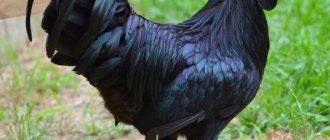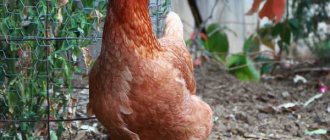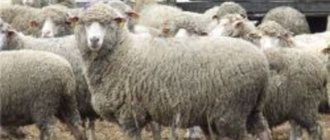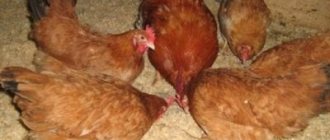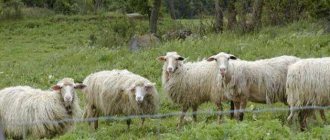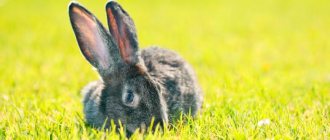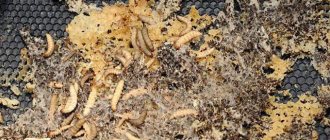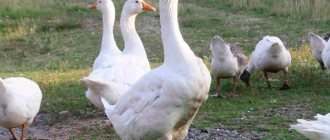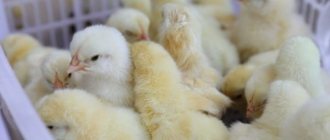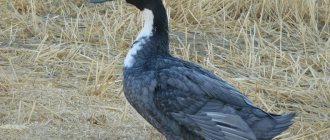Home » Articles about turkeys » Slate turkeys
In addition to productive breeds, breeders have also bred decorative ones - slate turkeys belong to this category. They do not give much weight gain, but they have an interesting color. They are bred mainly to decorate the farmstead and carry out breeding work.
Description
In 1874, American breeders carried out work on the fusion of genotypes of birds with white and black feathers. This is how slate turkeys appeared. The resulting chicks had a plumage color similar to a shade of blue-gray slate. Such a stone used to be called slate - hence the name of the breed.
Blue (lavender, lilac) slate turkeys have received official status. They did not arouse any particular interest - the economic crisis that occurred in the United States did not contribute to the development of the aesthetic direction of poultry farming. Nowadays, the slate breed of turkeys is gradually gaining popularity - they are raised in small quantities on private farmsteads and in zoos, and are used as a gene pool in scientific genetic research and breeding work.
Turkey breeds
It is interesting that these curious birds were once not found on our continent.
They were brought by the Spaniards from America in the 14th century. Europeans immediately tasted the tender dietary meat and since then turkey has become a traditional dish. The muscles of these birds consist of highly digestible proteins. Just like chicken, it is recommended for weakened or sick people. It is well tolerated by those who suffer from arthritis or urolithiasis. Compared to chicken, it contains more calcium, which is beneficial for a growing body and therefore especially suitable for children.
From the very first days of breeding, the selection of the most interesting individuals from an economic point of view was carried out, and in the 19th century, selection became targeted. There is currently a wide variety of turkey breeds. Turkey breeds for home breeding and industrial breeding differ from each other primarily in weight and secondarily in color. Additionally, there are a couple more important parameters - the ratio of poultry weight to meat yield and the time it takes to gain optimal weight for slaughter.
Characteristics
The bird is classified as light crosses. The American Standard defines the following characteristics of the blue slate turkey:
- lush plumage, giving volume to the body;
- the skin has a grayish tint (this characteristic spoils the presentation of the carcass);
- lavender, blue, ash-blue color - the presence of white and black inclusions on the tail feathers is allowed, the feathers on the back are slightly darker than on the chest;
- small head, light beak, dark eyes;
- males have a pink growth on the head, the neck is bare, at 10 weeks skin outgrowths (corals) are formed;
- the metatarsals have a pinkish tint.
The weight of adult males usually does not exceed 10-10.5 kg, females - 6-6.3 kg. The weight of daily turkey poults is 50 g.
Turkeys have average egg production. The weight of 1 egg is 75 g. The shell is creamy. Birds reach sexual maturity at 8-9 months. When creating a family, there should be no more than 8 females per 1 male. Out of 20 turkey poults, only 8-10 are. completely take over their parents' characteristics.
Since this is a cross and not a breed, a split in characteristics occurs - approximately half of the brood will have black, white, and motley plumage.
According to the description, slate turkeys are resistant to stress and easily get used to new conditions. They are non-aggressive and unpretentious. Turkeys become good brood hens - you can lay 17-20 eggs. The diameter of the nest is about 60 cm, the height of the sides does not exceed 15 cm. If there are a large number of eggs, it is advisable to use an incubator to produce offspring.
Bronze North Caucasian
The credit for developing this “line” belongs to the breeders of the Stavropol Territory. For a long time, the main breeding area for such turkeys was the Central Asian republics. They are still in demand due to their rapid growth and weight gain, survival rate and undemanding diet.
After the first month, grown chickens weigh 4 kg, growing to 12-15 kg and 8-9 kg (for males and females) by slaughter age. The carcasses are rich in white meat (25% of this muscle is in the thoracic region).
The appearance of this species is specific - with an elongated, long-legged body with a massive chest. The appearance of the “roosters” is very impressive, thanks to the combination of black and brown feathers with a golden-bronze tint and a fan-shaped tail. The feathers of the “hens” are less striking and pockmarked.
Breeding
Slate blue turkeys are used in breeding, crossing with more productive breeds. The birds are banded, assigned a number, and entries are made in a diary. The resulting individuals often have plumage other than blue, but become carriers of the gene - it will manifest itself in future generations.
You can also get a blue-gray color yourself by crossing white and black birds. Some of the offspring will receive a beautiful feather color. It is these individuals that are used for further breeding. It is important to take into account that there should be no family ties between the individuals used in selection.
Chick development
There are signs of disease that appear in chicks. The fact is that the slate breed is a kind of hybrid, and with further crossing, the offspring may not be in enviable health. Therefore, it is important to keep an eye on the birds.
It is worth paying attention, for example, if the chick cannot get up from its back. In a healthy bird, the muscular apparatus of the back is sufficiently developed for this manipulation, and it will not be difficult for it to stand on its legs. If the chick fails to do this, it should be culled. Over time, it will not grow into a healthy bird and it will simply die.
Another warning sign is when young turkeys fall on their feet. Some people advise wiping their paws with alcohol, but this measure is pointless. The fact is that falling on your feet is associated with insufficient development of the musculoskeletal system. This disease can be caused by poor nutrition of the mother when hatching chicks or further nutrition of young individuals.
The defect can also be inherited from the parent. Further breeding of chicks with a defect is not recommended; they must be culled.
YouTube responded with an error: The request cannot be completed because you have exceeded your quota.
Bird care
There are no special requirements for keeping slate turkeys - they are provided with standard conditions. In a poultry house per 1 sq. m accommodate no more than 2 individuals. If it is necessary to maintain the purity of the blood, females are allocated a separate pen, males are kept separately.
The room temperature is maintained at about +18°C. Optimal humidity is 60%. There should be no drafts, but high-quality air exchange must be ensured. Perches are located at a height of 0.7-1.5 m in several tiers. Containers with ash and sand for dry baths (1:1) are installed in the room.
In the warm season, long walking is organized. In winter, the bird is allowed to walk at a temperature not lower than -15°C. If the winter is snowy, then the area is covered with straw or wood shavings.
Reproduction of turkeys
Turkeys lay eggs in the spring and winter, laying an average of 50 or more eggs within 2.5-3 months. The chicks are incubated for 28 days. Females make excellent hens; they never abandon their nests. They are often used on goose or duck nests. The turkey very carefully looks after its brood - it warms the chicks, takes care of their food and jealously protects them from dangers.
For a turkey to be a good hen, she must hatch her chicks herself. The adopted ones almost always get pecked. Experienced business owners advise placing turkey chicks with a turkey at the end of daylight hours, after allowing her to sit on the eggs for a couple of days to satisfy the hen's instinct.
Diet
In the summer, when the birds are released for walking, forbs become the basis of the diet. In the evening they are fed a grain mixture, which includes wheat, corn, barley, oats without films, peas, millet, and legumes. Be sure to include chalk, feed yeast, a small amount of table salt, meat and bone and fish meal, and bran into the diet. In winter, vegetables (beets, carrots, pumpkin, cabbage, etc.) and herbal flour become sources of vitamins. A balanced diet serves as a prevention of vitamin deficiency, helps maintain the quality of plumage, and helps avoid pecking.
Moscow bronze
Bred in Russian breeding grounds, it attracts owners of private farms and poultry farms with good survival results and accelerated growth, adapting well to being both on range and in cages.
“Moscow Bronzes” are used for meat when they reach 5 months, growing to the standard average weight group - 19 kg and 11 kg for turkeys and turkey hens, respectively. The productivity of each unit is 2 eggs per day, a total of 80-90 eggs.
Among other breeds, this one is distinguished by its unusual color - a mixture of rich brown and light shades with a pearlescent tint. However, brownish skin and feather stumps impair the commercial quality of the finished product.
Diseases
According to the description of the breed, slate turkeys have good immunity, but if the conditions of detention are violated, problems can still arise. One of them is hypovitaminosis. It develops against the background of a deficiency of vitamins A, E, D. Symptoms: dull plumage, stool disorders, inflammation of the cloaca. When treating hypovitaminosis, birds are given the drugs Chiktonik and Trivit.
If grain predominates in the bird’s diet and the supply of dry food is not controlled, then the crop may become blocked - the problem can only be solved surgically. Prevention is a responsible approach to feeding, choosing high-quality feed.
The appearance of worms is possible - most often, infection occurs through the soil during free grazing or through poorly cleaned equipment. Another parasitic disease dangerous for turkeys is histomoniasis. Of the infectious diseases, the most dangerous are pseudoplague, smallpox, and mycoplasmosis.
Details by age
Of course, the above figures are very approximate. These are the average indicators inherent in a particular breed of turkey. Farmers claim that the optimal weight of a turkey is 12 kilograms in adulthood. To achieve such figures, it is necessary to monitor their weight from the first days of keeping birds. So, a chick at the age of 1 month should weigh 1300 grams. If a turkey chick is observed from the first time it emerges from the shell, then at the age of one day its weight should be 50 grams. During the first week, this figure increases 4-5 times. That is, by the end of the first week of life, the weight of the turkey should reach 200-250 grams.
Large breed turkey
From the second week of life, each young turkey should gain 40 grams of weight daily. At the end of 1 month of life, daily growth should increase to 55-75 grams per day. At 2 months, a healthy large breed turkey should weigh at least 5 kg. In order for weight to increase steadily, the daily volume of feed should be 300 grams with subsequent increases.
Birds of the broad-chested breed show the most intensive weight gain at the 3rd month of life. During this period, the weight doubles and reaches 10 kg. In order for the weight to increase and remain stable, the bird must eat at least 400 grams of feed daily. Some types of breeds are slaughtered at the 3rd month of life. A 10 kilogram turkey fully meets consumer wishes.
Small and medium breeds
If at the age of 3 months a turkey weighs from 3.5 to 4.5 kg, then it will gain 500 grams weekly. So by 4 months the weight of the bird should range from 4.5 to 5.5 kg
To achieve such indicators, it is important to follow a diet. Birds need to be fed at the same time every day
Only if this rule is followed will the birds actively gain weight.
At the age of 5 months, medium and small breeds of turkeys reach a weight of 4.5-6.5 kg. For small turkeys, the maximum weight cannot be more than 7 kg. This means that it makes no sense to keep them for more than 6 months. The bird will gain fat and the meat will become tough. Therefore, upon reaching the maximum weight, small breed turkeys are sent to slaughter.
At the age of 6 months, an individual of a medium breed reaches a weight of 6-8 kg. With the right diet and regular, hourly meals, the maximum weight of a medium breed turkey will reach 9-12 kg, and a turkey – 7-9 kg. Typically, turkeys are not kept longer than 7 months. The exception is females, which are required to incubate eggs. Such individuals are kept from 8 to 12 months.
What type of turkey is best for small flocks?
There is technically only one breed of turkey, but there are many varieties available. If you are interested in raising turkeys, it is important to choose a breed that suits your specific needs.
An important criterion to understand is the difference between the commercial type and the old, naturally occurring one. Commercial grade varieties have been specifically developed for turkey product manufacturers, consumer preferences and poultry market efficiency. Older types retain the characteristics of turkey breeds that were developed in Europe and the colonial United States.
Bourbon red
Character
This variety is a tame animal and feeds very well on pasture.
Story
This popular turkey is believed to have originated from crosses with Buff, Bronze and Dutch in Pennsylvania in the 1800s. The result was called Tuscarora Red or Tuscawara Red. Red Tuscaroras were brought to Kentucky, where their development continued. The final name Bourbon Red Turkey comes from Bourbon County in the Bluegrass region of Kentucky. At one time they were also called Bourbon Butternuts and Kentucky Reds.
In America in the 1930s and 1940s, they were one of the main "commercial" breeds, but like several other well-developed breastbone varieties, they fell into disuse in favor of the broad-breasted turkey. Since 2002, increased interest in the biological toughness and superior flavor of Bourbon Red meat has reignited consumer demand and created an emerging market niche.
Appearance
The Bourbon Red's plumage is a rich dark chestnut or mahogany color with white tail feathers. The varieties have a light yellowish tint with darker brown flecks. The beak is dark at the base, the tip resembles a horn color. The eyes are dark brown, and the legs are reddish in young turkeys, pink in adults. A mature male red Bourbon breed weighs up to 14.9 kg, and a mature female up to 8.1 kg.
Meat
Birds of this breed feed well on pasture and provide excellent, tasty meat.
The breed was originally called Bourbon Butternut, but it wasn't until it was renamed Bourbon Red that it really became popular.
The meat of these turkeys is known for its full flavor, and the breed is considered one of the best to taste.
Commercial options
Turkeys are used primarily for meat production. Most consumers prefer breast or white meat. To accommodate this preference, producers were motivated by genetic selection, which led to the emergence of new, widespread varieties of turkey. These commercial varieties have a fast growth rate, so many owners raise commercial turkeys for their high meat production and feeding efficiency. The most popular varieties for small-scale production are the commercial Bronze and White varieties. The Bronze has plumage reminiscent of a wild turkey, and the Broad-breasted White was chosen for its white plumage and fast growth. Although both types are good for producing turkey in small flocks, the disadvantage of the Bronze breed is that the axils of dark feathers sometimes remain on the meat even after the carcass has been processed.

